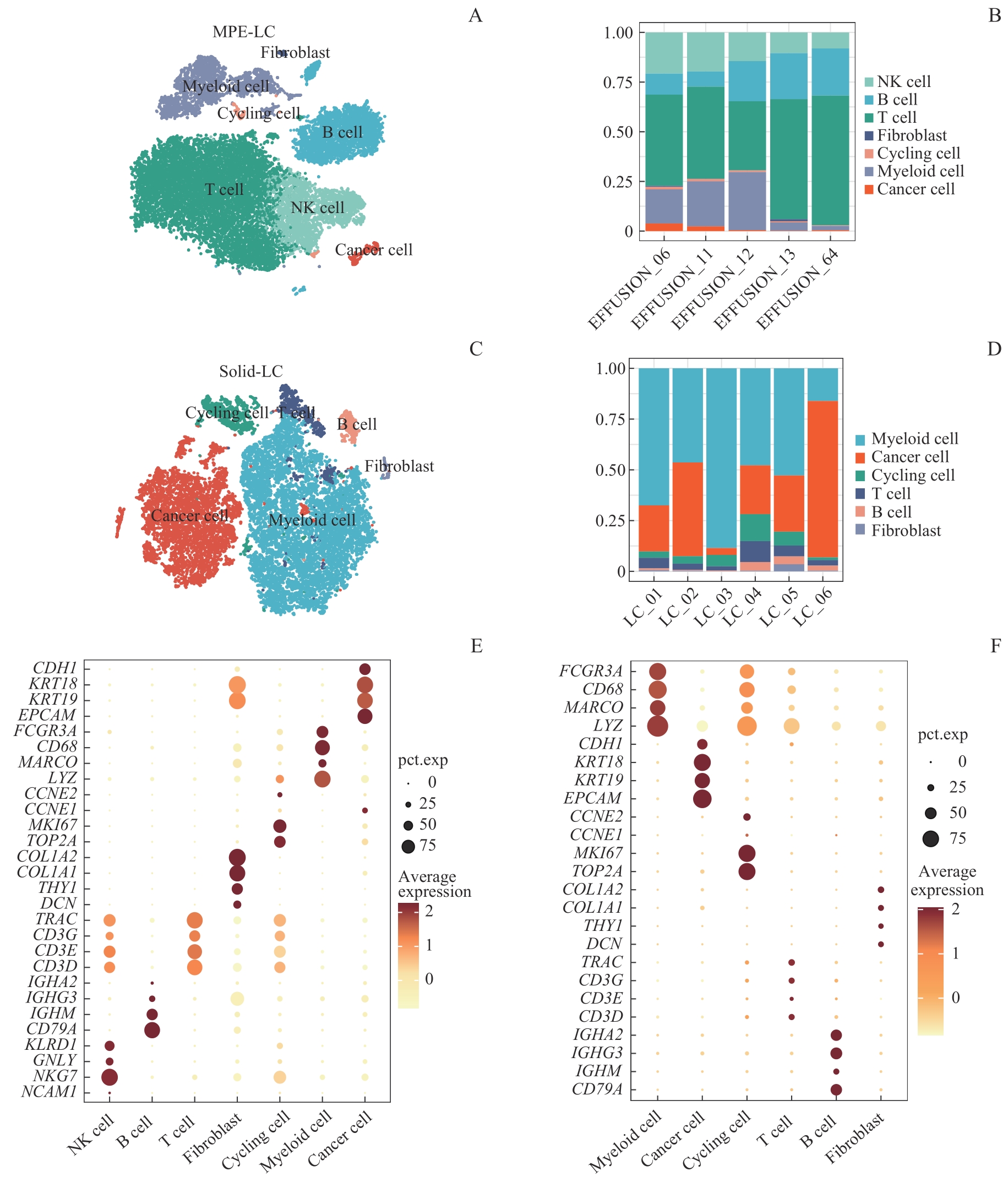肺癌恶性胸腔积液来源肿瘤细胞的小鼠PDX模型构建及实验验证
Construction and experimental validation of mouse PDX model by malignant pleural effusion-derived tumor cells from lung cancer
Note: A. Clustering and dimension reduction identified 7 cell subtypes in 5 malignant pleural effusion lung cancer (MPE-LC) samples. B. Stacked percentage bar charts for MPE-LC show the cell proportions in each subtype. C. Clustering and dimension reduction revealed 6 cell subtypes in 6 solid lung cancer (Solid-LC) samples. D. Stacked percentage bar charts for Solid-LC illustrate the cell proportions in each subtype. E. Bubble plots for MPE-LC display the expression of classic marker genes within each cell subtype. F. Bubble plots for Solid-LC depict the expression of classic marker genes within each cell subtype. KLRD1—killer cell lectin-like receptor D1; GNLY—granulysin; NKG7—natural killer cell granule protein 7; NCAM1—neural cell adhesion molecule 1; IGHA2—immunoglobulin heavy constant α2; IGHG3—immunoglobulin heavy constant γ3; IGHM—immunoglobulin heavy constant mu; CD79A—CD79a molecule; TRAC—T cell receptor α constant; CD3G—CD3 γ subunit of T-cell receptor complex; CD3E—CD3 ε subunit of T-cell receptor complex; CD3D—CD3 δ subunit of T-cell receptor complex; COL1A2—collagen type Ⅰ α 2 chain; THY1—thy-1 cell surface antigen; DCN—decorin; CCNE2—cyclin E2; MKI67—marker of proliferation Ki-67; TOP2A—DNA topoisomerase Ⅱ α; FCGR3A—Fc γ receptor Ⅲa; MARCO—macrophage receptor with collagenous structure; LYZ—lysozyme; CDH1—cadherin 1; KRT18—keratin 18; EPCAM—epithelial cell adhesion molecule.
